Related Research Articles

Hovasaurus is an extinct genus of diapsid reptile belonging to the order Eosuchia. It lived in what is now Madagascar during the Late Permian and Early Triassic, being a survivor of the Permian–Triassic extinction event and the paleontologically youngest member of the Tangasauridae. Fossils have been found in the Permian Lower and Triassic Middle Sakamena Formations of the Sakamena Group, where it is amongst the commonest fossils. Its morphology suggests an aquatic ecology.
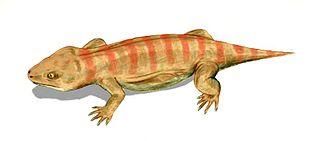
Procolophon is a genus of lizard-like procolophonid reptiles that first appeared in the Late Permian (Lopingian) of South Africa, Brazil, and Antarctica. It persisted through the Permian–Triassic extinction event, but went extinct in the early Triassic. The type species is P. trigoniceps.
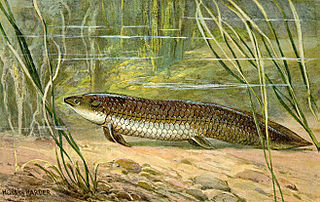
Ceratodus was a wide-ranging genus of extinct lungfish. Fossil evidence dates back to the Early Triassic. A wide range of fossil species from different time periods have been found around the world in places such as the United States, Argentina, Greenland, England, Germany, Egypt, Madagascar, China, and Australia. Ceratodus is believed to have become extinct sometime around the beginning of the Eocene Epoch. The closest living relative of Ceratodus is thought to be the Queensland lungfish, Neoceratodus forsteri, which means "new Ceratodus" in Greek.

Batrachotomus is a genus of prehistoric archosaur. Fossils of this animal have been found in southern Germany and dated from the Ladinian stage of the Middle Triassic period, around 242 to 237 million years ago. Batrachotomus was described by palaeontologist David J. Gower 22 years after its discovery.
Redondasaurus is an extinct genus of phytosaur from the Late Triassic of the southwestern United States. It was named by Hunt & Lucas in 1993, and contains two species, R. gregorii and R. bermani. It is the youngest and most evolutionarily-advanced of the phytosaurs.
Almasaurus is an extinct genus of trematosaurian temnospondyl within the family Latiscopidae. It is known from several skulls and some postcranial material found from the Argana Formation in Morocco, which dates back to the Late Triassic.
Tersomius is an extinct genus of dissorophoid temnospondyl within the family Micropholidae. It is known from the early Permian of North America.

Pteronisculus is an extinct genus of prehistoric bony fish that lived during the Early Triassic and Middle Triassic epochs of the Triassic period. The preoccupied genus name "Glaucolepis" Stensiö, 1921 is a synonym of Pteronisculus White, 1933.
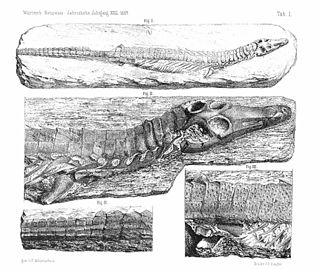
Dyoplax is an extinct genus of pseudosuchian archosaur, possibly an erpetosuchid. Fossils have been found from the type locality within the upper Schilfsandstein Formation in Stuttgart, Germany. The holotype specimen was a natural cast of a nearly complete skeleton that lacked only parts of the tail and limb bones.

Ptychoceratodus is an extinct genus of lungfish living from Early Triassic to Middle Jurassic. It was established by Otto Jaekel for one species, transferred from Ceratodus genus. Type species is P. serratus from the Middle Triassic of Switzerland and Germany. Ptychoceratodus had two pairs of massive dental plates, bearing 4-6 acute ridges. Its skull roof was composed from massive, plate-like bones. In the central part of skull roof was localized an unossified fenestra. Most of the Ptychoceratodus findings are isolated dental plates, some associated with jaws. Other parts of skull or postcranial skeleton are relatively rarely found as fossils. The anatomy of skull is the best recognized in P. serratus, whereas less complete cranial material is available also for P. concinuus, P. phillipsi, and P. rectangulus. Although Ptychoceratodus is known exclusively from the Triassic and Jurassic, there were also Cretaceous specimens referred to this genus. However, they are more often regarded as representants of Metaceratodus. Ptychoceratodus is the only member of the family Ptychoceratodontidae. The first named species is P. phillipsi by Louis Agassiz in 1837 as a species of Ceratodus and later moved to Ptychoceratodus genus. Occurrences of Ptychoceratodus come mainly from Europe. However, occurrences from other continents suggest it was dispersed globally during the Triassic. After 2010, the new fossil material behind the Europe was reported from South America, India, and Greenland

Paratypothorax is an extinct genus of aetosaur, known from a single species, Paratypothorax andressi. It was a broadly distributed member of the group found in Germany, North America, and possibly parts of Gondwana. The best specimens come from Germany, though for more than a century they were mistakenly considered phytosaur armor. Paratypothorax was a large and wide-bodied typothoracine aetosaur, as well as the namesake of the tribe Paratypothoracisini.
Procerosuchus is an extinct genus of loricatan archosaur. Fossils have been collected from the Late Triassic Santa Maria Formation in Geopark of Paleorrota, Rio Grande do Sul, Brazil, which is Carnian in age. The genus was first described by the German paleontologist Friedrich von Huene in 1942.
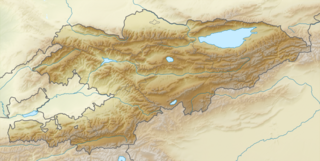
The Madygen Formation is a Late Triassic (Carnian) geologic formation and Lagerstätte in the Batken and Osh Regions of western Kyrgyzstan, with minor outcrops in neighboring Tajikistan and Uzbekistan. The conglomerates, sandstones and mudstones of the 560 m (1,840 ft) thick formation were deposited in terrestrial lacustrine, alluvial, fluvial and deltaic environments.
The Colorado City Formation is a geologic formation in Texas. It preserves fossils dating back to the Triassic period.
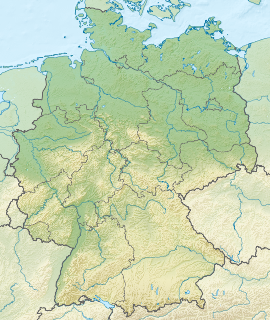
The Solling Formation is a geologic formation in Germany. Formerly considered earliest Triassic (Induan), but later dating places the formation from the Olenekian to Anisian of the Triassic period.

The Röt Formation or Rötton Formation is a geologic formation of the Buntsandstein in Germany. It preserves fossils dating back to the Middle Triassic Epoch. The formation overlies the Plattenstein and Solling Formations and is overlain by the Jena Formation.

The Anton Chico Formation is a geologic formation exposed in New Mexico that was deposited in the Anisian Age of the middle Triassic Period.
This list of fossil reptiles described in 2022 is a list of new taxa of fossil reptiles that were described during the year 2022, as well as other significant discoveries and events related to reptile paleontology that occurred in 2022.
References
- 1 2 3 "†Colognathus Case 1933". Paleobiology Database. Fossilworks. Retrieved 24 February 2022.
- 1 2 Case, E. C. (1933). "Colognathus proposed for Xenognathus, preoccupied". Contributions from the Museum of Paleontology, University of Michigan. 3 (1): 1–14.
- 1 2 "†Colognathus obscurus Case 1928". Paleobiology Database. Fossilworks. Retrieved 24 February 2022.
- 1 2 Case, E. C. (1928). "Indications of a cotylosaur and of a new form of fish from the Triassic beds of Texas, with remarks on the Shinarump Conglomerate". Journal of the Washington Academy of Sciences. 23 (1): 65–65. hdl:2027.42/48181.
- 1 2 3 Heckert, Andrew B. (2007). "Colognathus obscurus Case, an unusual vertebrate index fossil of Adamanian (St. Johnsian: Latest Carnian) time, from the Upper Triassic of the American Southwest". Geological Society of America Abstracts with Programs. 2007 GSA Denver Annual Meeting (28–31 October 2007). Vol. 39. p. 30.
- ↑ Sues, Hans-Dieter; Schoch, Rainer R. (2013). "First record of Colognathus (?Amniota) from the Middle Triassic of Europe". Journal of Vertebrate Paleontology. 33 (4): 998–1002. doi:10.1080/02724634.2013.732977.
- ↑ Schoch, Rainer R. (2011). "A procolophonid-like tetrapod from the German Middle Triassic". Neues Jahrbuch für Geologie und Paläontologie - Abhandlungen. 259 (2): 251–255. doi:10.1127/0077-7749/2011/0124.